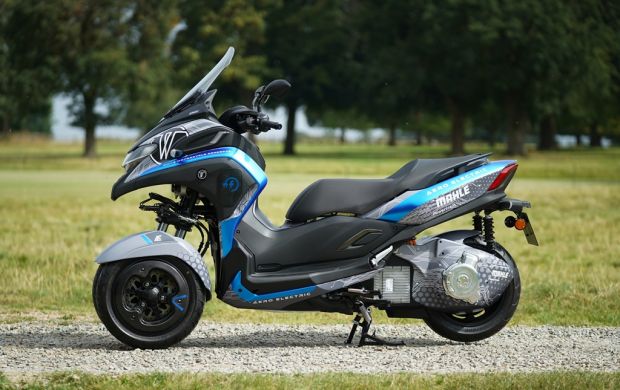Back

White Motorcycle Concepts launches world’s first aero-electric motorcycle
4th September 2024
White Motorcycle Concepts (WMC), the company behind the British electric motorcycle land-speed world-record programme, has launched a new fully-electric rapid-charging motorcycle that is the first in the world designed specifically to meet the needs of fleets and first responders globally.
The WMC300E+ offers a 100-mile range when measured against the aggressive emergency services drive cycle (125 miles against the standard drive cycle), yet can be recharged using a standard CCS charger in under 15 minutes thanks to a unique battery concept developed by MAHLE Powertrain.
At the centre of its unique capabilities are a remarkable aerodynamic performance and an innovative battery design. The first makes use of WMC’s patented V-Duct, a venturi duct that passes through the centre of the motorcycle that substantially reduces aerodynamic drag, improving performance, enhancing stability, and reducing energy consumption. The concept behind this central air duct has been honed as part of the company’s land-speed record programme, and in the WMC300E+ an optimised dual-channel design delivers a 25% increase in aerodynamic efficiency.
Key to the bike’s rapid charging, and therefore its high operational availability, is a unique battery concept, developed and built by specialist engineering provider MAHLE Powertrain. For motorcycles, the transition to an electric powertrain enables greater packaging freedoms and it is this principle that shaped the battery form. After a comprehensive programme of modelling, simulation and prototyping, WMC and MAHLE Powertrain’s engineers settled on a T-shaped battery pack.
As a result of the conversion to fully-electric propulsion, the new WMC300E+ offers not just zero-emissions-in-use but also improved acceleration compared to its petrol equivalent. In addition, it is capable of speeds of up to 100mph while maintaining excellent aerodynamic stability, even when equipped with heavily-laden panniers.
The bike’s striking design helps to make riders more visible – a key requirement in emergency response roles – while its ability to be ridden on a standard car licence removes the need for specialist training. This also makes it ideal for use in other services such as paramedic first responders and last-mile delivery duties, while its minimal charging footprint means it can be deployed easily, even where space and power considerations are limited.
